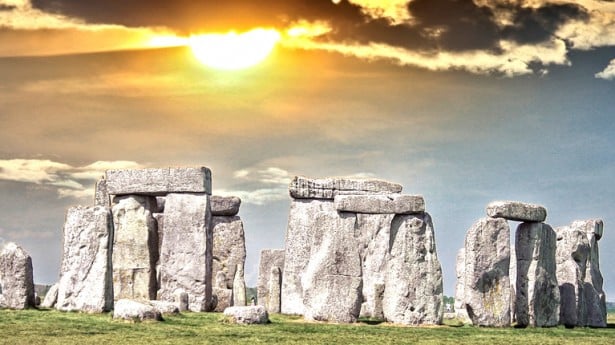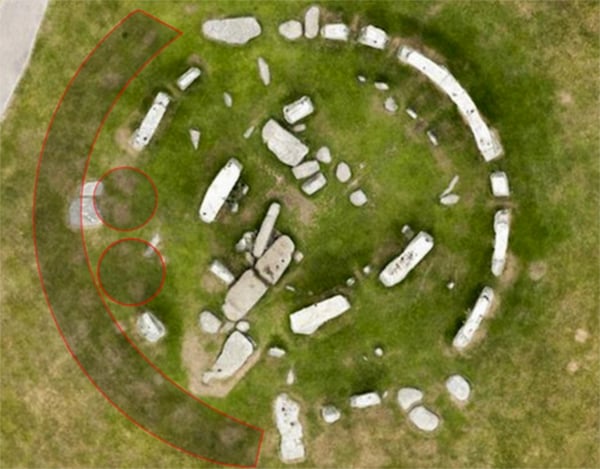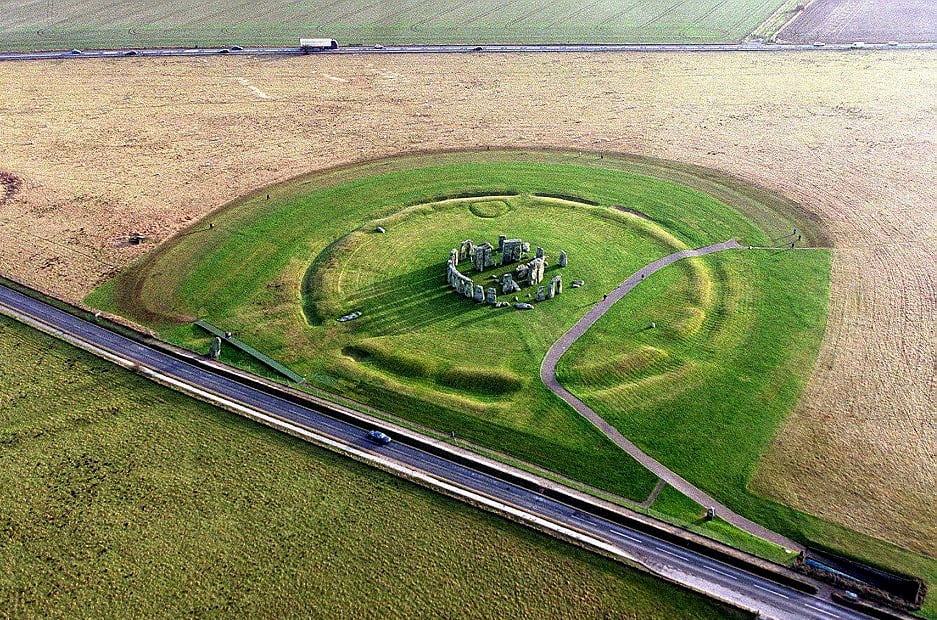Art World
Summer Heat Helps Unlock the Mysteries of Stonehenge
Drought and a short garden hose led to a major discovery.

Drought and a short garden hose led to a major discovery.

Sarah Cascone

Archaeologists are one step closer to solving the mysteries of Stonehenge thanks to the summer’s heat, reports the Telegraph. A too-short watering hose meant that the site’s grounds crew was unable to water all of the grass around the ancient structure, and as the area dried out, the ghostly outline of long-missing stones that would have completed the circle were gradually revealed.
As crazy as it sounds, when a stone is buried in the ground for a long time, it will effect the rate at which grass grows, even long after it is gone. Archaeologists have previously witnessed this phenomenon, which has helped them discover the sites of long-lost Roman forts and other ancient structures.

An aerial view of Stonehenge showing the dry patches where stones completing the circle once stood. Photo: SWSN.com/English Heritage.
The new finding is the first confirmation that in its original state, Stonehenge was a complete circle, a theory that had previously remained unproven despite complex geophysical surveys and extensive excavations.
Susan Greaney of English Heritage, who told the Telegraph the find was “really significant,” credited the too-short hose with the find. “We maintain the grass with watering when it’s very dry in the summer, but our hosepipe doesn’t reach to the other side of the stone circle. If we’d had a longer hosepipe we might not have been able to see them.”
“A lot of people assume we’ve excavated the entire site and everything we’re ever going to know about the monument is known,” Greaney added. “But actually there’s quite a lot we still don’t know and there’s quite a lot that can be discovered just through non-excavation methods.”

An aerial view of Stonehenge.
Photo: SWSN.com.
“I was standing on the public path looking at the grass near the stones and thinking that we needed to find a longer hosepipe to get the parched patches to green up,” recalled groundskeeper Tim Daw, who alerted professionals to the possible significance of the dead grass, in an interview the Telegraph. “A sudden light-bulb moment in my head, and I remembered that the marks were where archaeologists had looked without success for signs that there had been stone holes, and that parch marks can signify them.”
“It’s great that people who know the site really well and look at it every day were able to spot these parch marks and recognize them for what they were,” Greaney remarked. “It shows us just how much we still have to learn about Stonehenge.”
“I am still amazed and very pleased that simply really looking at something, that tens of thousands of people had unwittingly seen, can reveal secrets that sophisticated machinery can’t,” added Daw.